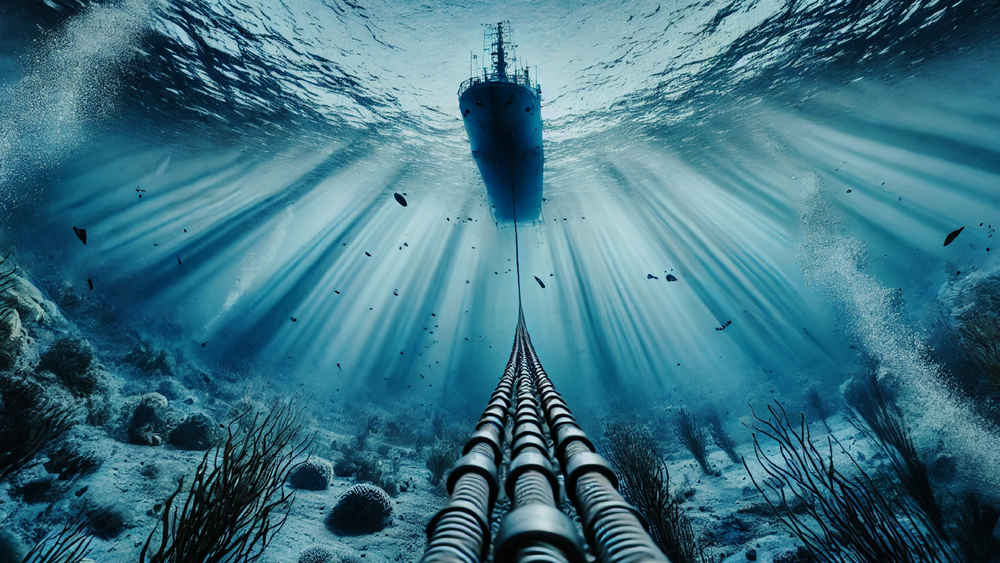Challenge
Modern navies increasingly deploy towed-array sonar from submarines or unmanned underwater vehicles. That’s why passive systems, highly effective when undetected, are so cable-critical. The cable must be neutrally buoyant: not sinking to the seabed, not floating to the surface where it can be spotted. That balance is extremely delicate. Copper conductors are eight times heavier than seawater, while foam or polymer jackets compress under deep-sea pressure, changing buoyancy with every meter of depth. Achieving stability across operating ranges is a challenge few suppliers dare to tackle.
Solution
DeRegt engineered a neutrally buoyant sonar cable by combining lightweight strength members with density compensation layers. Instead of traditional steel, aramid fibers provide tensile strength at a fraction of the weight. Foam layers offset the mass of copper conductors, while polyethylene sheathing protects both strength and insulation against saltwater intrusion.
But the true breakthrough came in testing. Seawater density changes with salinity, temperature, and depth. And foam compresses under pressure. To predict buoyancy behavior at depth, DeRegt developed a unique buoyancy pressure tank. The only one of its kind worldwide. In this tank, cable samples are submerged under controlled pressures up to 300 bar, while fiber-optic load cells measure weight changes with micrometer precision. This reveals exactly how density shifts at 100, 200, 300 or even 3000 meters.
Armed with this data, engineers could prove very tight tolerances, far beyond industry norms, and reject unrealistic demands with technical integrity.
At the termination end, DeRegt created a flexible, pressure-compensated design. By segmenting stiff elements with articulated shackles and embedding the assembly in silicone gel, the termination can bend onto compact winches without risk of leakage or fatigue. This combination of buoyancy mastery and termination reliability sets the system apart from conventional sonar cables.
Result
The outcome was a cable that stays invisible, stable, and reliable. Navies can now tow long-range passive sonar arrays without the risk of floating detection. For operators, this means greater confidence in shallow or complex waters, where traditional systems fail.
The buoyancy tank innovation also pushed the boundaries of cable qualification: what started as a single defense requirement became a new standard in subsea engineering. The same technology now supports offshore robotics and renewables, proving the broader value of military-driven R&D.
For DeRegt, this case confirmed its reputation for integrity and technical courage. Rather than overpromising, the team invested in unique test methods and set realistic tolerances that could be delivered, and then exceeded. The result: a sonar cable system unmatched in precision, reliability, and operational flexibility.
Expert view
“Neutral buoyancy isn’t theory — we measure it, 300 meters deep.”


.png)

